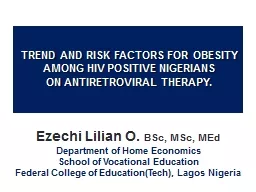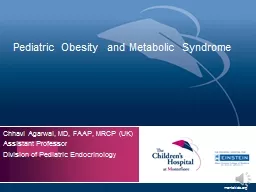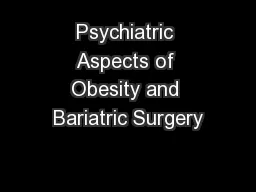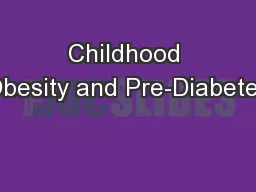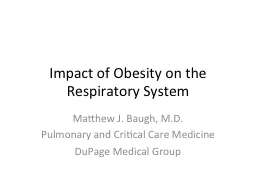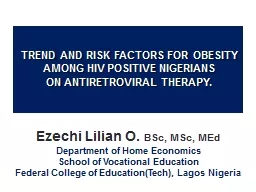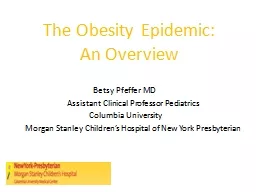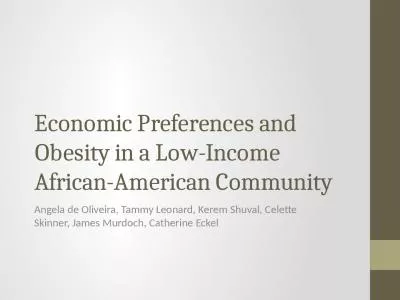PPT-Trend and risk factors foR obesity
Author : alida-meadow | Published Date : 2019-02-20
among HIV positive Nigerians on antiretroviral therapy Ezechi Lilian O BSc MSc MEd Department of Home Economics School of Vocational Education Federal College
Presentation Embed Code
Download Presentation
Download Presentation The PPT/PDF document "Trend and risk factors foR obesity" is the property of its rightful owner. Permission is granted to download and print the materials on this website for personal, non-commercial use only, and to display it on your personal computer provided you do not modify the materials and that you retain all copyright notices contained in the materials. By downloading content from our website, you accept the terms of this agreement.
Trend and risk factors foR obesity: Transcript
Download Rules Of Document
"Trend and risk factors foR obesity"The content belongs to its owner. You may download and print it for personal use, without modification, and keep all copyright notices. By downloading, you agree to these terms.
Related Documents

